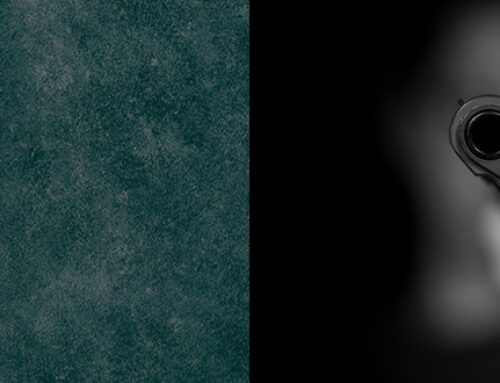Keith Small wrote that any religion professing to be the sole foundation of truth should never shy away from any form of scrutiny. He wrote;
“Many people of all faiths and no faith have come to realize that religious tradition cannot be followed blindly. If a religion is to commend itself in this age, it must be open to the hardest and best questions put to it. We no longer live in a world where religious communities can keep themselves aloof from the criticism and scrutiny of others who don’t share their beliefs and values.”[1]
When considering the most revered book of Islam, I want to look at three points that are essential when considering its history. In part one of this article, I will show that there is a lot of speculation concerning the content of the book’s origins.
Tales of the Ancients.
It is no secret that Islam’s most revered book contains narratives that bare a strange resemblance to some myths that were penned before the origins of the Qur’an. Surah Al Furqan (25.5) records an explicit accusation that Muhammad repeated the ‘tales of the ancients’ (6.25, 8.31, 16.24, 23.83, 27.68, 46.17, 68.15, 83.13).
“And they say: “Tales of the ancients, which he has caused to be written and they are dictated before him morning and evening.”
The Sahih International translation says;
“And they say, “Legends of the former peoples which he has written down, and they are dictated to him morning and afternoon.”
Historically Muhammad was accused of repeating and incorporating previous odes from before the revelation of the Qur’an, including it as a sacred revelation. Missionary Rev. W. T. St. Clair- Tisdall, tracks foreign elements within the Qur’an from Jewish folklore, Gnostic sources, as well as Zoroastrian and Buddhist tales. These sources were known to be false theologically and historically but were effortlessly validated and included in the Qur’anic text as divine revelation. Tisdall at the turn of the 1900s laments that;
“the influence of true and genuine Christian teaching upon the Quran and upon Islam in general has been very slight indeed, while on the other hand apocryphal traditions and in certain respects heretical doctrines have a claim to be considered as forming one of the original sources of Muhammadan faith.”[2]
There are numerous examples of these legends and folk stories included in the Qur’an[3], but for the sake of time I will give just two examples. In Surah Al-Anbiya (21.51-70), the story relates how Abraham frowns upon his Father idolatry smashing the Idols he venerated. This story is found in the ‘Midrash B’reish it Rabba’ (38.12-13)[4] where it is attributed to a Jewish Rabbi, Hiyya, who devised the story to show the perils of idolatry. Rabbi Hiyya’s tale was discussed by early church-Father Jerome (347-419/420) and was also mentioned in the Jewish ‘Book of Jubilees, ‘ which dates to the 2nd century and the Babylonian Talmud.
In another part of the Qur’an, we find a story relating to Jesus speaking supernaturally from the cradle. The source of this story comes directly from the ‘Arabic Gospel of the infancy of the Saviour.’[5] Surah Maryam (19.29-31) and Surah Ali’ Imran (3.46), includes this narrative as a historical certainty. At the same time, we know it is merely a deduction from early gnostic sources influenced by an early pseudo-Christianity. Peter Townsend writes;
“Muhammad was clearly unaware of the actual origins of this story, i.e. that it does not appear in the Gospels, and is therefore willing to grant it exalted status as the Word of Allah.”
Some Muslims attempt to say that these early renditions were deductions from a prior revealed text that could have contained the original words of Allah, but there is no historical account for this claim to be validated. Rev. W. T. St. Clair-Tisdall, therefore, concludes that when we look at the source of Muhammad’s revelation;
“we find that the first “source” of the Koran and tradition consisted of the notion, customs, and religious beliefs, existing around Muhammad.”[6]
The author of the Qur’an clearly cannot tell fact from fiction. And these stories are counted as fact.
Conclusion:
There is simply no doubt that Muhammad had some external influence apart from the Angel Jibreel (جبريل “Gabriel”) for his revelation. Muhammad deemed the ‘tales from the ancient’ to have some value, and these tales are found in the Qur’anic text as inspired (waḫy). The Author of the Qur’an also approves the previous revelations, the Tawrāt (Arabic: توراة), the Injíl (Arabic: إنجيل), and the Zabūr (Arabic: زَبُورُ), to be inspired books that he attached to his own perceived revelation. Lastly, the author of the Qur’an also listens to the instructions given by people around his Prophet. Their opinions then find themselves collated within the central book of Islam.
Short Bio: Rudolph has completed his BTh and his BTh Hons at SATS and is currently pursuing his Masters in Theology with a specific emphasis on Islam at the same institution. He is also actively involved with Cult and Muslim Evangelism (Ad Lucem Ministries) and he also lectures full-time at a local seminary in Randburg (RBC).
Disclaimer: The views expressed in this article belong to the authors and do not necessarily reflect those of the South African Theological Seminary.
Sources:
[1] Holy Books have a History, Pg. iv.
[2] The Original Sources of The Quran, Society for the promotion of Christian Knowledge, London, Pg.210 – 211 1905.
[3] Read: https://www.answering-islam.org/Silas/borrowing.htm
[4] https://www.sefaria.org/Bereishit_Rabbah.38.13?lang=bi&with=all&lang2=en
[5] https://www.newadvent.org/fathers/0806.htm
[6] The Origins of the Quran, Pg.235.




